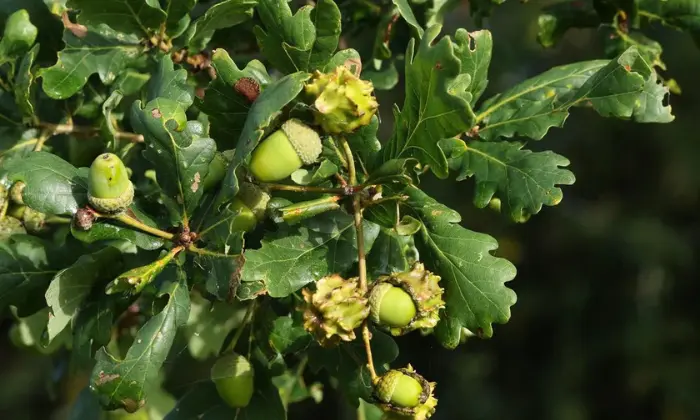When we think of majestic oak trees, we often envision their sturdy trunks, sprawling branches, and dense foliage. However, these iconic trees offer more than just shade and scenic beauty. They are nature’s providers, bestowing upon us a variety of gifts throughout the year. In this comprehensive guide brought to you by I Haul Landscape Services, we delve into the question: what falls from oak trees?
Understanding Oak Trees:
Before we explore the treasures that oak trees bestow upon us, let’s take a moment to appreciate these remarkable giants. Oaks belong to the genus Quercus and are distributed widely across the globe, with hundreds of species inhabiting diverse environments. Renowned for their longevity and resilience, oak trees have been revered in folklore, literature, and culture for centuries.
What Falls from Oak Trees in the Fall?
As autumn approaches, oak trees undergo a remarkable transformation, shedding their leaves in a spectacle of colors. But what else falls from oak trees during this season?
You can also read our blog What Are The Brown Things That Fall From Oak Trees?
Oak Leaves:
As fall progresses, oak leaves undergo a remarkable transformation, turning hues of gold, amber, and russet before drifting to the ground. The carpet of fallen leaves beneath an oak tree creates a picturesque scene and provides essential organic matter for soil health. Over time, decomposing oak leaves enrich the soil with nutrients, supporting the growth of other plants and organisms.
Acorns:
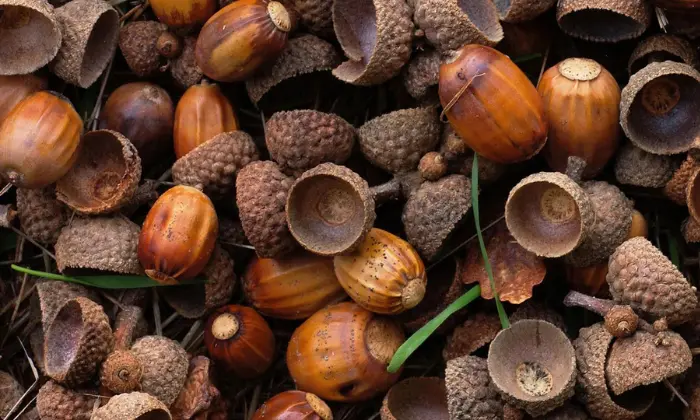
Acorns are perhaps the most recognizable fruit of the oak tree. Encased in a tough outer shell, these nuts are borne atop slender stems known as peduncles. Acorns serve as a vital food source for numerous wildlife species, including squirrels, deer, and birds. They are rich in nutrients and play a crucial role in the ecology of oak forests.
Oak Galls:
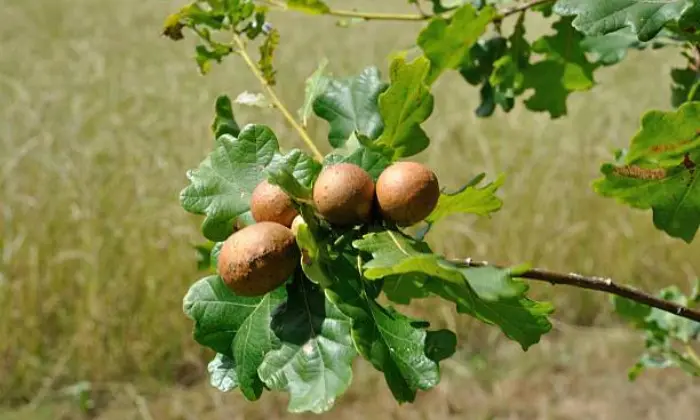
Fall is also the season when oak galls make their appearance. These peculiar growths are induced by the activity of certain insects, such as gall wasps or gall midges. The larvae of these insects release chemicals that trigger the oak tree to form abnormal growths, providing shelter and sustenance for the developing young. While oak galls may not be as aesthetically pleasing as other tree products, they are fascinating examples of nature’s intricate interplay.
Tree Debris:
In addition to organic matter like leaves and acorns, oak trees may also shed branches or twigs in the fall. This natural pruning process helps the tree conserve energy and prepares it for the dormant winter months. Fallen branches and twigs can be collected and utilized for various purposes, such as mulching or firewood.
What Falls from Oak Trees in Spring?
With the arrival of spring, oak trees awaken from their winter slumber, signaling the start of a new growing season. Here’s what you can expect to find beneath an oak tree during this time:
Leaf Litter Decomposition:
Throughout the spring months, the previous year’s leaf litter beneath oak trees undergoes decomposition. Beneficial microorganisms break down fallen leaves, releasing nutrients that enrich the soil and support the growth of new vegetation. This natural process of nutrient cycling ensures the health and vitality of the oak tree and its surrounding ecosystem.
Catkins:
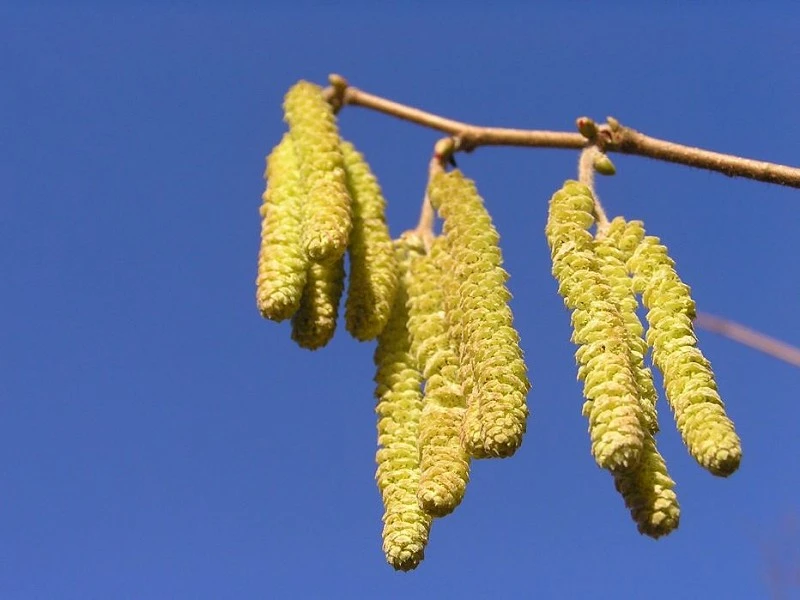
In early spring, oak trees produce clusters of slender, cylindrical structures known as catkins. These pendulous flower clusters are a common sight dangling from the branches of oak trees. While not as showy as the blooms of some other trees, catkins play a crucial role in the reproductive cycle of oaks, releasing pollen to fertilize female flowers.
New Growth:
As temperatures rise and daylight hours lengthen, oak trees begin to put forth fresh growth in the form of tender leaves and shoots. The emergence of vibrant green foliage signifies the tree’s transition from dormancy to active growth. Oak leaves unfurl gradually, adding a lush canopy of green to the landscape as spring progresses.
Oak Nuts:
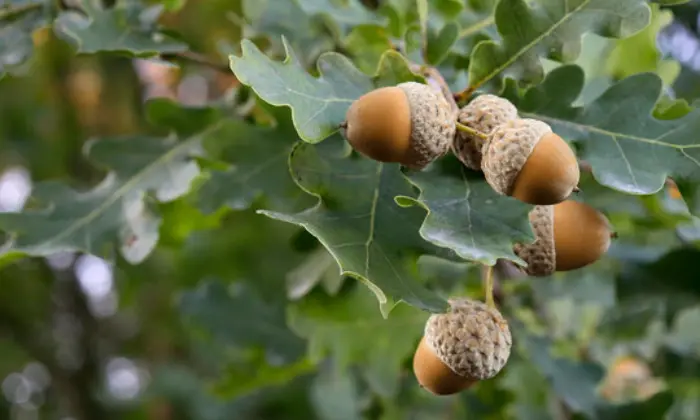
In some regions, oak trees produce edible nuts known as oak nuts or oak acorns. These nuts are smaller in size compared to traditional acorns and boast a milder flavor profile. Although they are not as widely consumed as standard acorns, they hold culinary potential and can be incorporated into various dishes.
Exploring Oak Tree Products with I Haul Landscape Services:
At I Haul Landscape Services, we recognize the value of oak trees beyond their ornamental appeal. Our team of experts is committed to promoting sustainable landscaping practices that harness the natural benefits of trees and native flora. Whether you’re interested in mulching with oak leaves, utilizing acorns in garden compost, or creating habitat features from oak wood, we offer tailored solutions to meet your landscaping needs.
Conclusion
In conclusion, oak trees offer a wealth of resources throughout the year, from acorns and oak nuts to oak galls and leaf litter. By understanding and appreciating these gifts of nature, we can foster greater stewardship of our environment and enhance the beauty of our outdoor spaces. With the expertise of I Haul Landscape Services, you can unlock the full potential of oak trees in your landscape design endeavors.
FAQs
What Are The Benefits Of Oak Trees In Landscaping?
Oak trees provide numerous benefits in landscaping, including shade provision, wildlife habitat creation, soil stabilization, and aesthetic enhancement. Their resilient nature and longevity make them valuable additions to any outdoor space.
Are Acorns From Oak Trees Edible For Humans?
Yes, acorns from certain oak tree species are edible for humans after processing to remove bitter tannins. Traditional methods of processing include leaching or boiling the acorns to make them palatable. However, it’s essential to identify the species of oak tree and properly prepare the acorns before consumption.
What Causes Oak Galls, And Are They Harmful To The Tree?
Oak galls are abnormal growths induced by the activity of certain insects, such as gall wasps or gall midges. While they may distort the tree’s appearance, oak galls typically do not pose significant harm to the overall health of mature oak trees. In fact, they often serve as temporary shelters for developing insect larvae.
How Can I Utilize Oak Leaves In Landscaping?
Oak leaves can be utilized in landscaping as mulch, compost, or soil amendment. Their rich organic matter adds nutrients to the soil, promotes moisture retention, and suppresses weed growth. Shredded oak leaves make an excellent mulch for flower beds, vegetable gardens, and around trees and shrubs.
Does I Haul Landscape Services Offer Tree Care Services For Oak Trees?
Yes, I Haul Landscape Services provides comprehensive tree care services, including pruning, fertilization, pest management, and disease control for oak trees and other species. Our certified arborists are knowledgeable about the specific needs of oak trees and can recommend tailored care plans to ensure their health and longevity.

